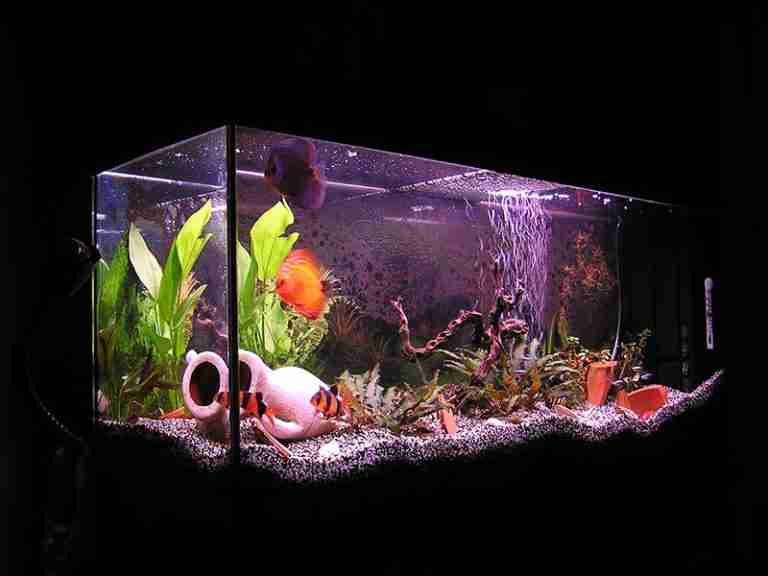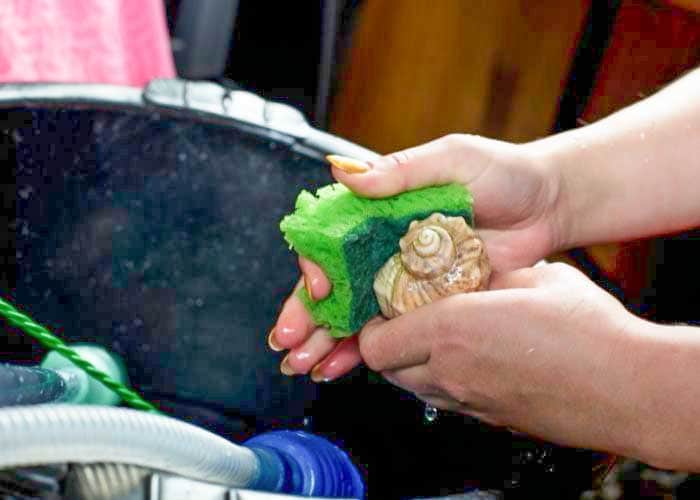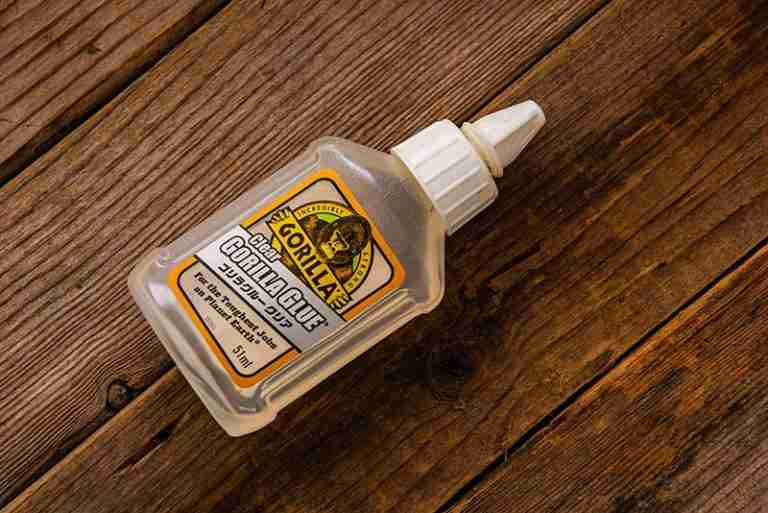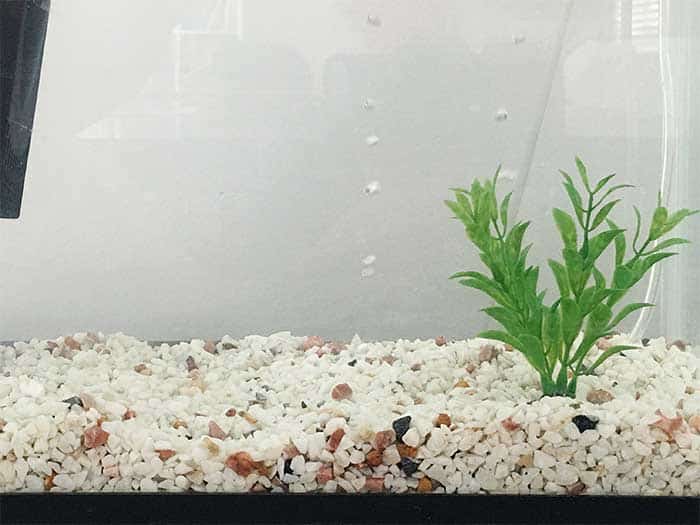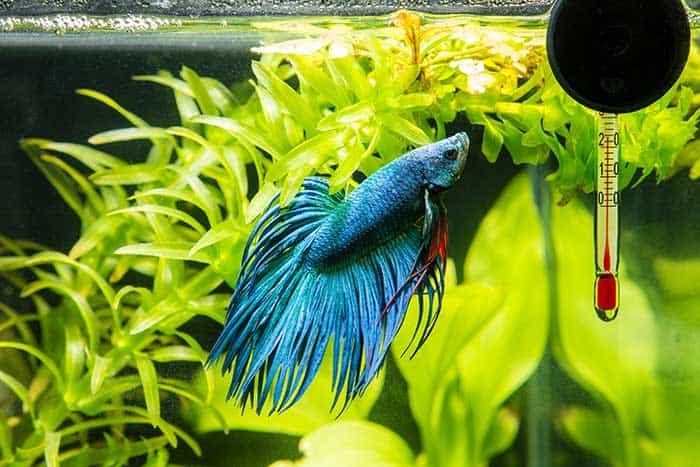Pest Aquarium Snails (Removal And Prevention)
Pest aquarium snails are one of the most annoying problems a fishkeeper can face. A few snails appear out of nowhere and can quickly take over a tank. Not only are they a nuisance, but snails can also carry diseases and parasites that can harm your fish.
There are a few ways to get rid of snails in your aquarium, and we will discuss the most common and effective methods. We will also look at the best ways to prevent snails from entering your tank, reducing the likelihood of an infestation occurring.
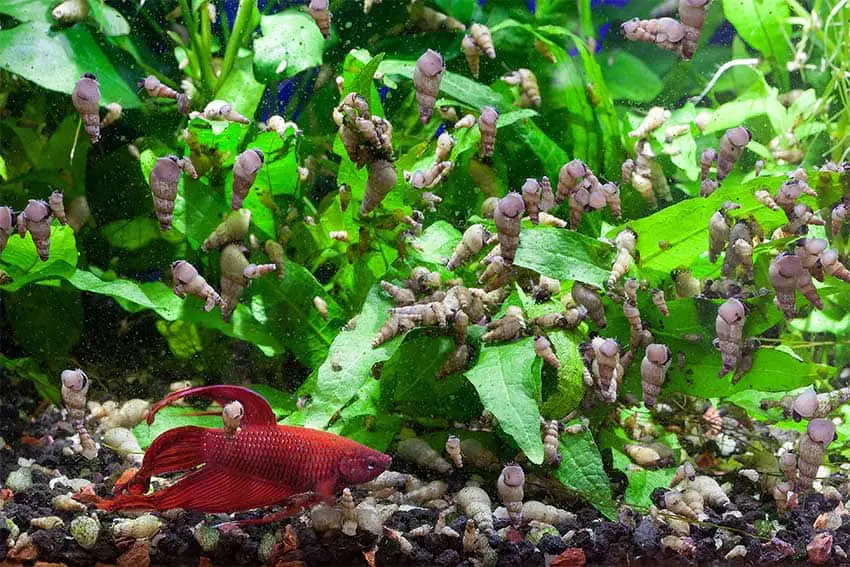
Tiny Snails In My Fish Tank
If you notice tiny snails appearing in your fish tank, your adult snails are breeding, and you will need to act fast to avoid a snail infestation in your aquarium. The snails most commonly considered aquarium pests can have large numbers of babies in a short time.
You will often notice tiny white snails in your aquarium as they contrast easier against dark backgrounds, however, baby snails can often be quite translucent and difficult to spot. The most common place to find baby snails is under plant leaves.
Knowing what snail species is breeding in your tank can help you to identify the egg sacks so that you can remove them before they hatch.
Later in this article, I will discuss the three most common species of snails that can overrun your aquarium.
How To Get Rid Of Snails In Aquarium
Snails are not always bad for an aquarium, they can play quite an important role. Your problems begin when you have a number of fast-breeding freshwater snails.
The easiest way to get rid of snails in your aquarium is to manually remove them from your tank by using a net to scoop them out or by hand, picking them off of aquarium plants and decorations. As It’s unlikely you will find all snails, you can combine it with other methods.
Some snails are just built to breed, laying large numbers of eggs, and they often don’t need another snail to mate with. These types of snails are difficult to control, and it is best to get rid of them if you can.
Aquariums have too small and delicate of an ecosystem to cope with vast numbers of snails, which are better suited to the large open-water environments found in the wild.
In the next sections, I will explain the methods I use to get rid of snails naturally and why they are so effective. I will also discuss other options open to you, including using chemicals.
Natural Way To Get Rid Of Snails In Aquarium
Fishkeeping is a large commercial space with equipment and chemicals available to solve most problems. Although chemicals are often necessary, some natural methods can be just as effective.
Snails can be difficult to see against a gravel substrate. I prefer to remove snails naturally, by hand, and with a baited snail trap to coax out any snails hiding away. A snail trap baited with lettuce leaves or algae wafers can attract large numbers of snails into one place for easy removal.
Removal By Hand
When removing snails by hand, you must check the tank thoroughly. Snails are usually found near a food source, typically your live aquarium plants. Check all plants thoroughly, especially under the leaves.
The filter housing is another place to check as snails feed off the waste pulled in through the filter inlet. Each tank is different, but you will quickly learn the most attractive areas to the snails in your tank.
Remove the snails from your tank and place them in a suitable bag or container ready for disposal. Always wash your hands after handling aquarium snails because they are known to carry parasites that can be harmful to both fish and humans.
Gravel substrates are the perfect place for pest snails to hide as they blend in easily. Although you should regularly clean your gravel substrate with a vacuum, it is difficult to monitor how many snails are removed using this method.
I don’t feel that vacuums are effective at removing pest snails from aquarium substrate because of their sheer size and weight, although vacuuming does remove trapped food that the snails feed on.
Aquarium Snail Traps
Removing snails by hand can be very tedious, so I also prefer to use a snail trap alongside. Snail traps are very effective; you can remove large numbers of snails from your aquarium on each use.
Aquarium snail traps are baited with a food source to which snails attract. Most snail traps are not designed to trap snails and instead draw them in large numbers. Once snails have entered the trap, they can be removed and disposed of quickly.
Because of their shell, some aquarium snails can be pretty big, making it difficult to design a snail trap that stops small fish from becoming trapped. Snails are slow-moving creatures, so snail traps only need to draw the snails onto their platform so that you can remove them.
Using a snail trap correctly will help you control pest snail populations. A good snail trap will allow the scent of the bait to travel freely. The bait needs to be more appealing than the snail’s food sources. Algae wafers or lettuce leaves are perfect bait for snails.
I frequently use traps to remove aquarium pests in large numbers, such as freshwater aquarium scuds which I wrote about in my article: Freshwater Scuds In Aquarium – Should you remove them?
What I Use
Below are two pieces of equipment I use myself, which you may find helpful.
The Dennerle snail catcher is a telescopic snail gobbler. The snail catcher is great at removing snails from the tank glass and difficult-to-reach areas. Grabbing snails by hand can be fiddly, and they often drop into the substrate where they are hard to find, or they hide behind the filter where you can’t reach them.
Check the Price Of Dennerle Snail Catcher
The POPETPOP snail trap is a simple snail trap, more like a platform, but it holds the bait in place and attracts the snails. Once the snails are onboard in their droves, just use the cord to remove it, dispose of the snails and place the trap back into the tank. Over time, fewer snails will be attracted, so you will know that your snail problem is almost under control.
Reduce Food Waste
Overfeeding your fish will cause uneaten fish food to fall to the bottom of your tank, which can rot and cause problems with water quality. Leaving uneaten fish food in your tank is also the perfect food source for pest snails.
When feeding most aquarium fish, you should typically only provide enough food that they can consume within a minute, and two feeds a day is often more than enough.
Many fish keepers will fast their fish. Fasting requires you to stop feeding your fish for a day or more to allow their digestive system to rest.
During the fasting days, fish will still look for food to eat in the substrate, which will minimize any food left for snails to eat.
You should regularly clean fish tank gravel with a vacuum to remove food waste that has become trapped.
Reduce Algae Growth
Algae is a favorite food source for pest snails in a fish tank, so you should prevent algae growth as much as possible. Too much natural sunlight or keeping your tank light on at night can encourage algae to grow.
Fish tanks typically need 14-16 hours of light per day (maximum), so remember to turn the light off at night at don’t keep your tank too close to a window during the day.
Limiting the growth of algae and eliminating fish food waste, as described above, will reduce the number of snails your tank can support before they die.
Add Some Freshwater Snail-Eating Fish
Snails can be a nourishing snack for many fish species, so adding some snail eaters are a great natural way to remove snails from your aquarium.
Below, I have listed some of the best freshwater snail-eating fish.
Loaches
Loaches feed on snails or anything else they can for in their mouths which makes them excellent snail predators. Loaches like to hunt through the substrate and are good at finding snails that blend with the substrate.
Loaches also hunt down and eat snail eggs left in the substrate or under plant leaves, which will help break the snails’ breeding cycle.
The best snail-eating loaches are:
- Clown loach
- Zebra loach
- Yoyo Loach
- Skunk loach
- Dwarf Chain loach
- Polka Dot loach
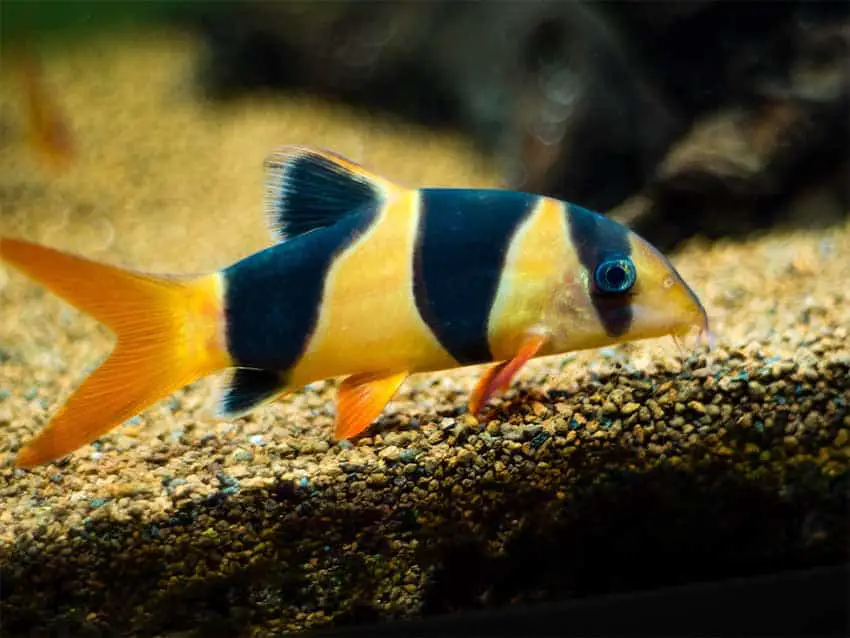
Catfish
Many species of catfish like to eat snails which makes them another perfect choice for eliminating pest snails from your tank. Although some catfish are primarily herbivores, most will eat a selection of meat and vegetation.
The best snail-eating catfish are:
- Spotted Raphael Catfish
- Striped Raphael Catfish
- Cory Catfish
- Bristlenose Pleco
Snails
Snails! Yes, you heard me right. Some snails are excellent at controlling the populations of smaller, fast-breeding snails by eating baby snails and eggs before they hatch, stopping excessive breeding.
The snails in the list below are much slower breeding and far easier to control.
- Assassin Snail
- Spixi Snail
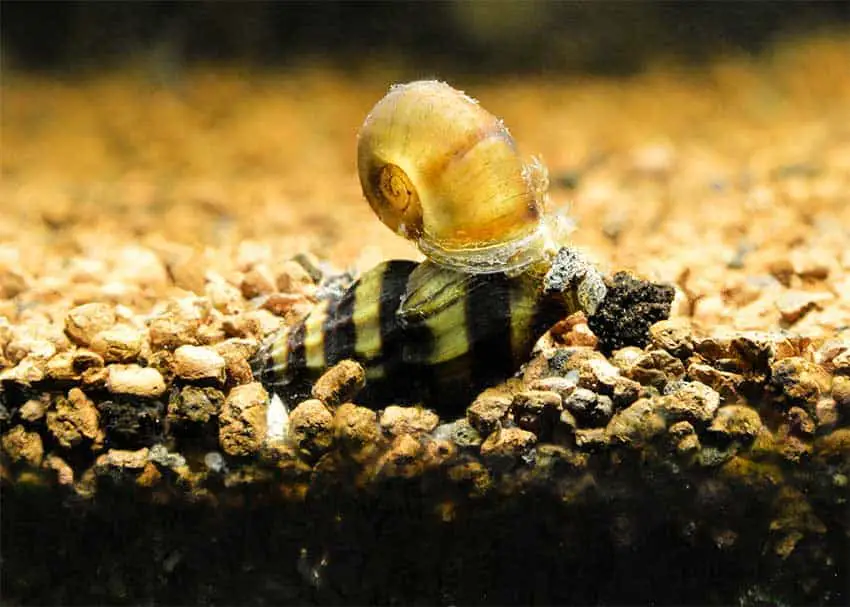
A carnivorous snail such as the Assasin snail or Spixi snail will make great snail predators, and they are ideal as pets. Because they are non-hermaphroditic, they need both males and females to breed, and they are much easier to control.
Other Freshwater Snail-Eating Fish
The best freshwater fish that eat snails are typically larger omnivorous or carnivorous fish. Snails are a common food choice for many fish in the wild because they are full of nutrients.
There are far too many freshwater snail-eating fish to list, so I have chosen some of the most common.
- Betta fish
- Goldfish
- Dwarf Gourami
- African Cichlids
- Convict Cichlids
- Rainbow darter fish
- Green spotted puffer
- Dwarf crayfish
- Paradise fish
- Bala shark
- Red-tailed black shark
- Dwarf puffer fish
- Golden Topminnow
- North American Ghost shrimp
- Pygmy Sunfish
- Pumpkinseed sunfish
Many of the above are predator fish that are often aggressive and not recommended for community tanks, so you must choose wisely. Do your research on each fish species before making your choice.
Chemical Treatments For Pest Aquarium Snails
If you have a snail infestation in your fish tank that has gotten way out of hand, manual removal may not be the best option. Several chemical treatments are available, however, when using chemicals, there will always be some trade-offs.
The most effective way to remove snails from your aquarium is to use a copper or copper sulfate product. Copper is lethal to snails but not usually harmful to fish. Copper will harm shrimp or other invertebrates and may harm some plants you must remove before use.
Snail eggs are often covered in a sticky gloop which helps to keep them In place and can also protect them from the copper solution. Even when you think all snails are dead, continue treatments for up to a week when all eggs should be hatched.
Once your copper treatment has worked, you will need to remove the dead snails from your fish tank. Dead snails can be another problem as they can decompose, causing issues with the aquarium water. It is unlikely that you will find all the dead snails at first, but regular cleans will eventually remove them.
Commercial Aquarium Snail Killer
When purchasing a commercial aquarium snail killer, you should always read the label carefully and follow all instructions. If the solution is likely to harm your tank or its inhabitants in any way, it will be clearly stated.
I try to avoid adding chemicals into my aquariums unless absolutely necessary, so I only recommend using a chemical snail treatment if you feel there is no other viable option.
Large numbers of snails can upset your fish tank’s delicate balance and cause water quality problems, so it is vital to act quickly.
What I Use
Below is a list of suitable aquarium snail treatments that I use and recommend.
Seachem Cupramine Copper
Slightly less toxic than copper sulfate but equally as effective. If you have shrimps or other invertebrates in your tank, you will need to remove them. Although live plants are sensitive to copper treatments, in low doses, they should be fine, but monitor them closely.
Seachem Cupramine copper is also an effective treatment for aquarium parasites such as white spot (ich), and as snails are common carriers of parasites, this treatment will offer extra protection.
Check the price of Seachem Cupramine Copper.
Copper Power Green
Another excellent copper treatment that will start killing snails from the first dose, Copper Power Green, is also toxic to all invertebrates in your tank. Like Seachems Cupramine Copper (Above), this treatment is not specifically designed to kill snails but is a treatment for fungus and external parasites.
Copper Power Green is a little more expensive due to the larger bottle, but I have used it myself, and it was very effective at killing snails without harming the fish or plants.
Important Note
If you use a copper treatment in your tank, you need to remove any activated carbon filter media, as it will remove the copper from the aquarium water making the treatment ineffective.
Types Of Pest Aquarium Snails
It’s worth mentioning that not all snails are considered pests. Pest snails are generally the fast breeding types that can quickly take over a tank, often appearing from nowhere. Certain aquarium snail species are kept as pets and are beneficial to the aquarium’s ecosystem.
Below are the three aquarium snails most commonly classed as pests in a fish tank.
- Ramshorn Snail (Family: Planorbidae)
- Bladder Snail (Family: Phisidae, Species: Physella acuta)
- Malaysian Trumpet Snail (Family: Thiaridae, Species: Melanoides tuberculata)
Each of the snails above has characteristics that make them difficult to control, so let’s look at each in more detail.
Ramshorn Snails
In my experience as a fish keeper, I think I come across ramshorn snail infestations most often.
Identification
Ramshorn snails can be identified by their shell, which resembles a coiling rope or ramshorn. The shell can range from several shades of brown to black or appear translucent.
Although the color of the ramshorn shell can vary greatly, the snails will either be black or a shade of pink or red. Unlike most snails with green blood, which is caused by hemocyanin, ramshorn snail blood contains red hemoglobin, which causes red/pink coloring.
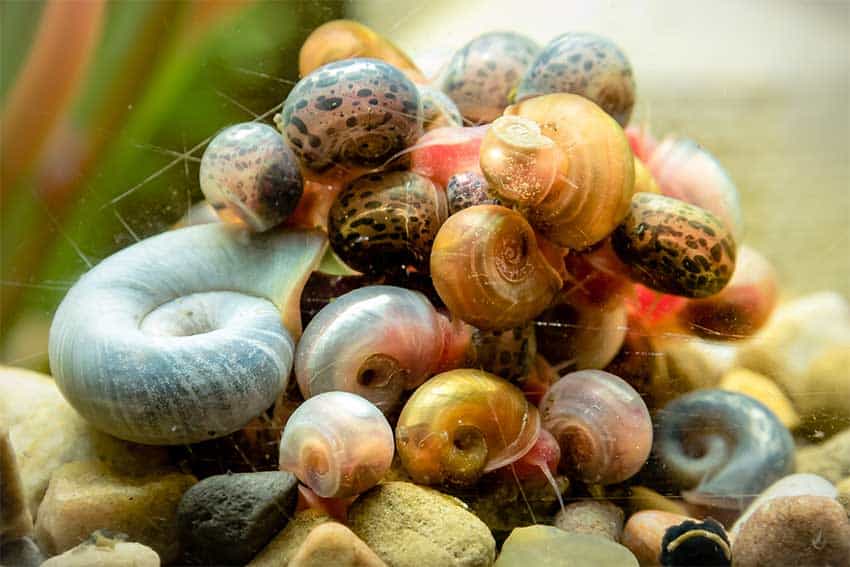
Most ramshorn snails come from the family “Planorbidae,” and the two species most commonly found in aquariums are “Planorbella duryi” and “Planorbarius corneus.“
Diet
Like most aquarium snails, ramshorn snails are omnivores that will eat almost anything, including leftover fish flakes, algae, and plant life. Ramshorn snails will happily feed on the carcasses of dead fish, shrimp, insects, and scuds but will mostly be found attached to the delicate leaves of live plants.
Breeding
One of the reasons why ramshorn snails are such pests is because of their ability to breed so quickly. Ramshorn snails are hermaphrodites, which means they possess both male and female reproductive organs so that reproduction can occur between any two snails, regardless of their sex.
Asexual reproduction is also possible with ramshorn snails, which means they can reproduce independently without needing a mate.
Ramshorn snails will lay sticky brown globules of egg sacks which you can often find attached to the underside of plant leaves or buried in the substrate, away from predators. Each egg sack will contain 12 or more eggs which can hatch in only a few days.
Newly hatched snails will be tiny and white, but they will quickly mature and become sexually active, usually within a month. Most Ramshorn snails will remain relatively small, often only 0.5-1 cm. However, dependent on the species, some Ramshorn snails can grow to 1 inch.
Ramshorns typically have a life expectancy of 1 year.
SOURCE: Wikipedia – Ramshorn Snail
Bladder Snails
Bladder snails, also referred to as tadpole snails, are another species commonly found in freshwater aquariums. Also quick to breed, bladder snail populations can quickly get out of control.
Identification
Bladder snails have sinistral or left-pointing shells as opposed to dextral, right-pointing shells. If you hold the snail with the aperture (hole where the snail lives) facing you and with the spire of the shell pointing upwards, in most cases, the aperture is on the left.
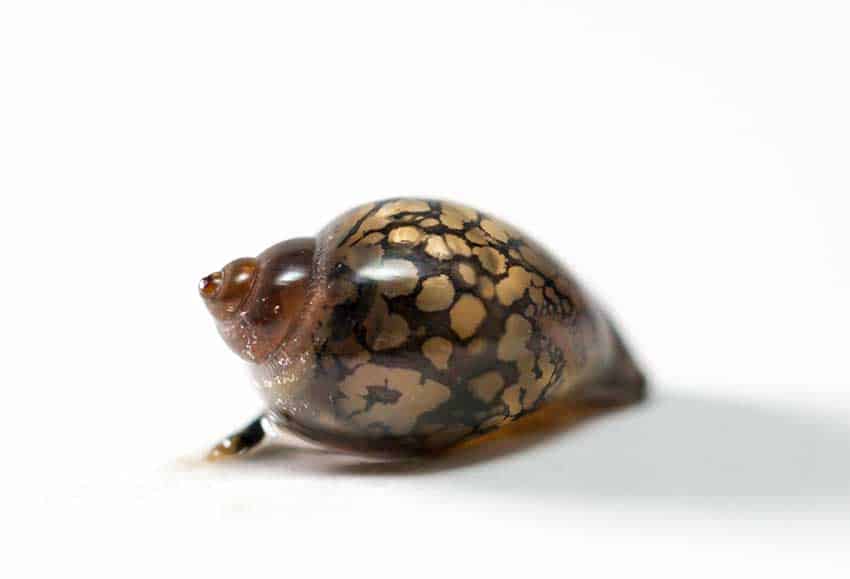
The shell of the bladder snail is usually quite translucent and elongated, with a long aperture and a spire at the end. The shell is often a light brown, sometimes with small areas of gold. Because the shell of the bladder snail is very thin, you can see the snail’s flesh, which is typically grey or purple.
Bladder snails do not usually grow larger than 0.5 inches in length, but in large populations, they can take up a lot of space in your tank.
Bladder snails are very common and can be found all over America, Europe, and Asia.
Diet
Like the ramshorn snail, bladder snails are omnivores that will eat almost anything they can find, such as decaying food waste, meat, and algae.
In small numbers, bladder snails are great at removing algae, and food waste, however, they also leave behind their own waste products, which can be a problem to your aquarium’s ecosystem as their numbers increase.
If you have a planted tank, large numbers of bladder snails will make short work of delicate leaves, stems, and roots which can cause overwhelming damage to your plants.
Breeding
When in small numbers, bladder snails can be beneficial to your tank, however, they reproduce quickly, which can make them aquarium pests.
Like the ramshorn snail, bladder snails are also hermaphroditic, so they can reproduce with any snail or self-fertilize when no other snails are present.
Egg sacks are usually attached to the underside of plant leaves or similar surfaces away from predators and can contain up to 30-40 eggs that typically hatch within a week.
Freshly hatched snails will be white or translucent in color, often reaching maturity within 30 days when they begin to reproduce. The lifespan of bladders snails is typically between 1.5-2 years.
SOURCE: aquariumsource.com – Bladder Snail
Malaysian Trumpet Snails
Also known as the red-rimmed melania, the Malaysian trumpet snail is native to northern Africa and Southeast Asia but has been accidentally introduced to many areas worldwide.
The Malaysian trumpet snail is very hardy, often found in freshwater, but can tolerate brackish water with high salinity. The trumpet snail can also tolerate low oxygen levels found in poor water conditions and temperatures as high as 50°C.
Identification
The Malaysian trumpet snail can be identified by the long twisting spire on an elongated conical shell, usually light brown and covered with dark spots. The shell can vary in darkness and color dependent on the trumpet snail’s natural surroundings helping it remain inconspicuous.
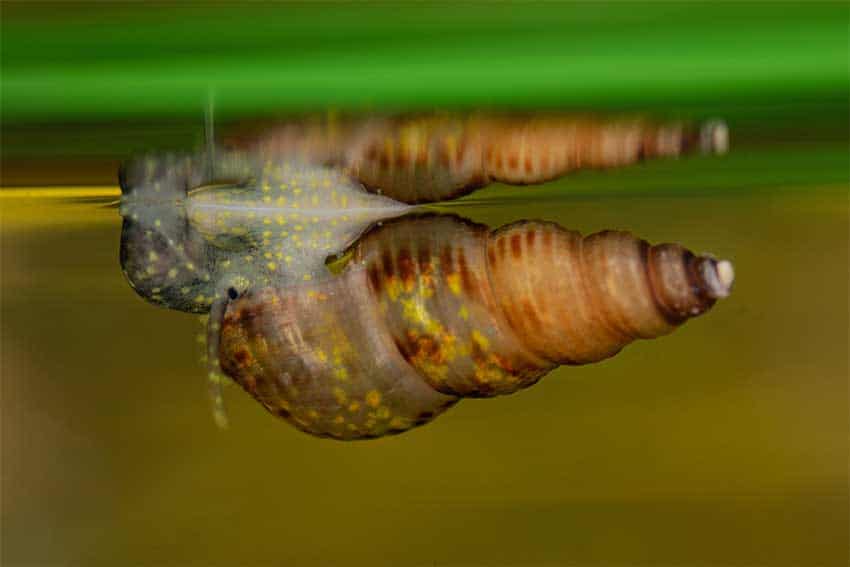
The typical size of the Malaysian trumpet snail is between 20-27 millimeters, however, they can grow much larger in some circumstances, with some specimens reported as large as 80 millimeters.
Diet
Much like the other two snails on my list, the Malaysian trumpet snail is omnivorous, eating most things, but their primary diet is algae, making them excellent substrate cleaners.
Breeding
Female Malaysian trumpet snails are parthenogenic, which means that the growth and development of embryos can occur without fertilization from sperm.
Another difference with this snail is that they are ovoviviparous, a bridging form of reproduction between egg-laying and live-bearing. Malaysian trumpet snails will carry their eggs in a brood pouch until they are ready to hatch.
Malaysian trumpet snails reproduce in very high numbers, often carrying more than 60 embryos in their brood pouch. When it comes to breeding, Malaysian trumpet snails tend to value the quantity of brood over quality, which is why they can quickly take over a tank.
SOURCE: Wikipedia – Red Rimmed Melania (Trumpet Snail)
How Did Snails Get In My Fish Tank?
Snails can easily find their way into an aquarium when adding new plants or substrates. Snail eggs are covered in a sticky gel that can be hard to spot when buried in gravel or attached to a plant leaf’s underside.
Because most pest snails can reproduce by themselves, only a single lone snail needs to enter your tank to wreak havoc.
Are Snails Bad For Aquariums?
The main point of this article is to discuss the best methods to remove snails from an aquarium, but are snails bad for aquariums or just unsightly?
Snails are not bad for aquariums in small numbers. Many people intentionally keep snails in their tanks. Snails require little oxygen, produce a small amount of waste, and eat leftover fish food and algae.
Many snails make great aquarium pets, such as Nerite Snails, Mystery Snails, and Assasin Snails. These snails are great tank cleaners, easy to care for, and slow breeders, so they are unlikely to take over your fish tank.
Pest snails breed extremely fast, and too many snails will quickly deplete your aquarium of the resources required by its other inhabitants and aquarium plants.
Although snails produce little waste, if you have too many snails, it can soon add up and cause issues with the water quality, such as high ammonia levels and changes to the aquarium’s pH levels. If you have high ammonia levels in your fish tank, it will probably cause a bacterial bloom and make your fish tank water cloudy.
How To Prevent Pest Snails In A Fish Tank?
Preventing snails from entering your fish tank is always the best solution for controlling snails. Keeping snails out of your tank is not difficult, but it does take a little work. It only takes a few snails to trigger an infestation.
The only way to prevent pest snails from entering your tank is to thoroughly clean ad disinfect all new plants, ornaments, and substrates before adding them to your fish tank. Disinfection can be done with a strong vinegar solution, a bleach solution, or boiling water.
Bleach and vinegar dips are commonly used to disinfect live plants and remove parasites or algae. They are very effective and harmless when used in the correct amounts.
I have written an article specifically about cleaning and disinfecting plants that cover bleach and vinegar dips in detail. You can find the article here: How To Clean Aquarium Plants.
How To Get Rid Of Snail Eggs In An Aquarium
Removing snail eggs from an aquarium is much more difficult than eliminating the snails themselves. You can easily miss snail eggs, which are often hidden from sight and covered in a sticky solution.
The best way to remove snail eggs is to leave it up to your fish or get some assassin snails. Catfish and loaches are excellent at finding snail eggs, but if you prefer something smaller, Assasin snails, by their very name, will help keep snail populations down by eating small snails and their eggs.
The only other option I would choose to get rid of snail eggs in a fish tank is the copper treatment I discussed earlier. It is unlikely that you will be able to locate all snail eggs by hand or sight, so a copper treatment will be more effective.
A copper treatment may not kill the snail eggs if they are within a protective film, but repeated doses will kill the newly hatched snails and stop them from breeding.
Conclusion
Snails are a common problem that all fish keepers must deal with at one time or another. If you can keep up with the situation, it is less likely to become a problem.
I have provided a few methods I use to control snail populations, such as snail traps and manual removal. Another simple option is to keep some fish that like to eat snails. Having some snail-eating fish in your aquarium is an excellent way to keep snail numbers down.
When the snail population in your aquarium becomes too large, a copper-based chemical treatment is very effective, although it can harm some plants and invertebrates.
Prevention is always the best option of all. You may never have a problem if you can prevent snails from entering your fish tank through appropriate cleaning and sterilizing of new plants, substrates, or ornaments, but remember, it only takes one snail to reproduce rapidly.


